-
 Bitcoin
Bitcoin $76,444.7530
-3.77% -
 Ethereum
Ethereum $1,473.8355
-5.46% -
 Tether USDt
Tether USDt $0.9991
-0.08% -
 XRP
XRP $1.7965
-5.51% -
 BNB
BNB $553.4919
-0.36% -
 USDC
USDC $0.9999
-0.02% -
 Solana
Solana $105.2981
-1.74% -
 TRON
TRON $0.2303
0.81% -
 Dogecoin
Dogecoin $0.1422
-4.62% -
 Cardano
Cardano $0.5587
-4.41% -
 UNUS SED LEO
UNUS SED LEO $8.9866
1.01% -
 Toncoin
Toncoin $2.9933
-4.74% -
 Chainlink
Chainlink $10.9113
-4.81% -
 Stellar
Stellar $0.2215
-4.76% -
 Avalanche
Avalanche $16.1163
-3.29% -
 Sui
Sui $1.9371
-3.89% -
 Shiba Inu
Shiba Inu $0.0...01065
-6.69% -
 Hedera
Hedera $0.1469
-3.29% -
 MANTRA
MANTRA $6.2058
-1.53% -
 Dai
Dai $1.0000
0.01% -
 Bitcoin Cash
Bitcoin Cash $269.3457
-2.08% -
 Polkadot
Polkadot $3.3773
-5.87% -
 Litecoin
Litecoin $69.2204
-2.50% -
 Ethena USDe
Ethena USDe $0.9986
-0.01% -
 Bitget Token
Bitget Token $4.0180
-3.25% -
 Pi
Pi $0.5649
-4.50% -
 Hyperliquid
Hyperliquid $11.1928
-2.80% -
 Monero
Monero $195.3885
-4.41% -
 OKB
OKB $50.9235
-0.59% -
 Uniswap
Uniswap $4.7688
-6.95%
How to view a Bitcoin address on Edge Wallet?
To access your Bitcoin address in Edge Wallet, open the app, select Bitcoin, tap "Receive," and a new address will be generated for secure transactions.
Apr 05, 2025 at 02:08 pm

Accessing Your Bitcoin Addresses in Edge Wallet
Edge Wallet is a popular cryptocurrency wallet known for its privacy features. Finding your Bitcoin address within the app might seem tricky at first, but it's a straightforward process once you know where to look. This guide will walk you through the steps, clarifying any potential confusion. Remember, your Bitcoin address is crucial for receiving payments, so understanding how to locate it is essential.
The location of your Bitcoin address within Edge Wallet depends slightly on the version and platform you are using (iOS, Android, etc.), but the general process remains consistent. However, it's crucial to understand that Edge doesn't display all your addresses at once in a list. Instead, you generate a new address each time you need to receive Bitcoin. This enhances your privacy and security.
Generating a New Bitcoin Receiving Address
To view a Bitcoin address, you first need to initiate a receiving transaction. This process generates a fresh address, ensuring maximum security for your funds. Old addresses, while still functional, are generally considered less secure due to potential exposure. Always use a new address for each transaction if possible.
- Open your Edge Wallet app.
- Select "Bitcoin" from your list of assets.
- Tap the "Receive" button (usually depicted by an arrow pointing inwards).
- The app will then generate a new Bitcoin address. This address is displayed on the screen, usually with a QR code for easy scanning.
- You can copy this address to your clipboard by tapping the copy icon.
This newly generated address is ready for you to share with anyone sending you Bitcoin. Make sure to double-check the address before sharing it to avoid sending funds to the wrong recipient. The app provides multiple ways to ensure accuracy.
Understanding Address Types and Their Implications
Edge Wallet, like many other wallets, employs different address types, often based on the underlying Bitcoin network and security protocols. These differences are usually transparent to the user, but understanding them can provide a deeper appreciation for the wallet's functionality. The specific address type displayed may vary based on your wallet's settings and the network's current state. For example, you might see addresses beginning with "bc1" (Bech32), which are generally preferred for their efficiency and security.
It's important to note that using an outdated address isn't inherently risky, provided no transactions have ever been sent to it. However, best practices always recommend using a fresh address for each transaction. This minimizes the risk of potential vulnerabilities associated with previously used addresses. While Edge's security measures are robust, this practice remains a crucial element of responsible cryptocurrency management.
Troubleshooting Common Issues
Occasionally, users may encounter difficulties generating or viewing their Bitcoin addresses. This could be due to various reasons, including network connectivity problems or app glitches. If you're experiencing issues, here are some troubleshooting steps:
- Check your internet connection: A stable internet connection is essential for generating addresses.
- Restart the app: A simple restart often resolves minor software glitches.
- Update the app: Ensure you're using the latest version of the Edge Wallet app.
- Clear the app cache: This can help resolve issues caused by corrupted temporary files.
- Contact Edge support: If the problem persists, reach out to Edge Wallet's customer support for assistance.
Remember to always be cautious and only use official channels to contact support. Be wary of phishing attempts that may try to steal your wallet information. Always prioritize security and verify any communication you receive.
Security Best Practices When Handling Bitcoin Addresses
The security of your Bitcoin is paramount. Always handle your addresses with extreme care. Never share your addresses with untrusted sources. Verify the recipient's address meticulously before sending any Bitcoin. Consider using a hardware wallet for enhanced security if you're handling substantial amounts of Bitcoin. Regularly review your transaction history to ensure everything is in order.
Frequently Asked Questions
Q: Can I see all my past Bitcoin addresses in Edge Wallet?
A: No, Edge Wallet does not display a history of all your past Bitcoin addresses in a single list. For security and privacy reasons, it generates a new address each time you request to receive Bitcoin.
Q: What if I accidentally delete a Bitcoin address after generating it?
A: You don't actually "delete" the address; you simply don't have a readily accessible copy. The address remains valid on the blockchain. However, you won't be able to receive Bitcoin to that address unless you have a record of it somewhere. Always back up your addresses securely.
Q: Are there different types of Bitcoin addresses supported by Edge?
A: Yes, Edge Wallet typically supports multiple Bitcoin address types, such as legacy addresses (starting with 1), P2SH addresses (starting with 3), and Bech32 addresses (starting with bc1). The type used depends on the settings and the network.
Q: My Edge Wallet is not generating a Bitcoin address. What should I do?
A: First, ensure you have a stable internet connection. Restart the app. Check for updates. If the problem continues, clear the app cache and consider contacting Edge support. It might be a temporary network issue or a bug within the app.
Q: How do I ensure the security of my Bitcoin addresses?
A: Never share your Bitcoin addresses with anyone you don't trust. Verify the recipient's address carefully before sending any Bitcoin. Consider using a hardware wallet for enhanced security if you handle significant amounts of Bitcoin. Regularly review your transaction history.
Q: Is it safe to use older Bitcoin addresses?
A: While not inherently unsafe if never used, it's best practice to use a fresh address for every transaction. Using older addresses slightly increases your risk exposure, although Edge employs strong security measures. It's a matter of minimizing potential vulnerabilities.
Disclaimer:info@kdj.com
The information provided is not trading advice. kdj.com does not assume any responsibility for any investments made based on the information provided in this article. Cryptocurrencies are highly volatile and it is highly recommended that you invest with caution after thorough research!
If you believe that the content used on this website infringes your copyright, please contact us immediately (info@kdj.com) and we will delete it promptly.
- "Cardano (ADA) Price Could Dip Below $0.60, Following Previous Market Cycle"
- 2025-04-09 05:10:12
- BONK, the well-known meme coin, has risen over 35% in the last week, attracting meme coin investors in the market. So, what caused this rally?
- 2025-04-09 05:10:12
- Bitcoin (BTC) Investors May Not Exactly Feel It, but BTC Has Been a Relatively Good Bet
- 2025-04-09 05:05:12
- Donald's Bitcoin (DONBTC) Could Turn Early Investors into Multi-Millionaires, Like Shiba Inu (SHIB) and Dogecoin (DOGE) Did
- 2025-04-09 05:05:12
- 6 Upcoming Kraken Listings That Could Be the Next Big Thing in Crypto
- 2025-04-09 05:00:13
- COTI Unveils New Privacy-Focused Blockchain to Reshape Web3 Transactions
- 2025-04-09 05:00:13
Related knowledge
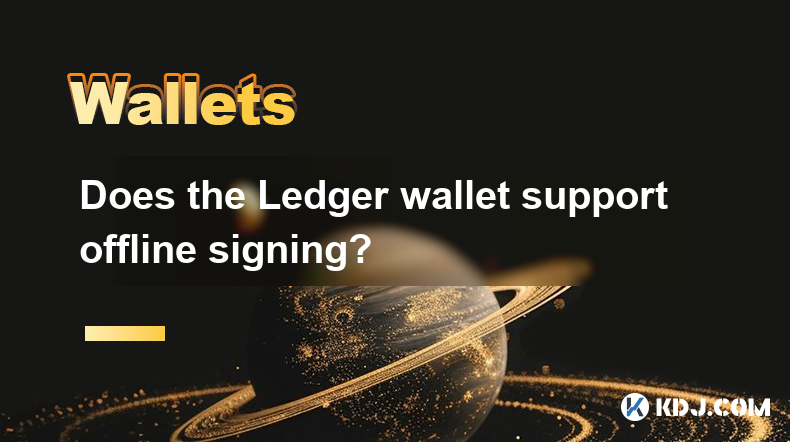
Does the Ledger wallet support offline signing?
Apr 09,2025 at 04:49am
Introduction to Ledger Wallet and Offline SigningThe Ledger wallet is a popular hardware wallet used by cryptocurrency enthusiasts to securely store their digital assets. One of the key features that users often inquire about is offline signing. Offline signing, also known as cold signing, is a security measure that allows users to sign transactions wit...
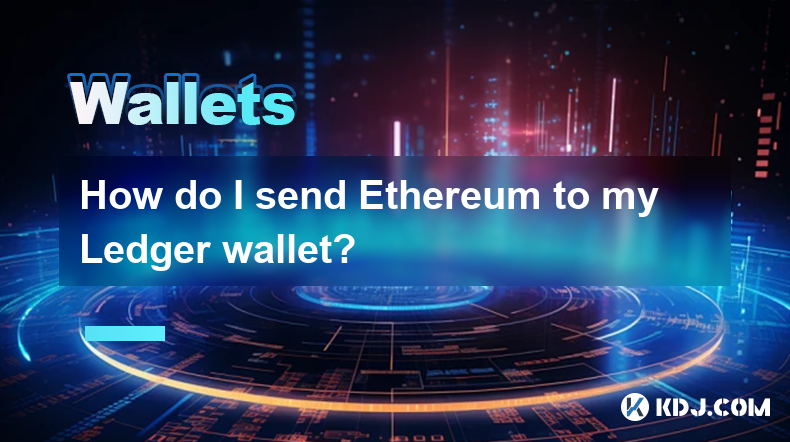
How do I send Ethereum to my Ledger wallet?
Apr 09,2025 at 03:21am
Sending Ethereum to your Ledger wallet involves a few straightforward steps, but it's crucial to follow them carefully to ensure the security of your funds. In this guide, we'll walk you through the process of transferring Ethereum to your Ledger wallet, ensuring that you understand each step and the necessary precautions. Preparing Your Ledger WalletBe...
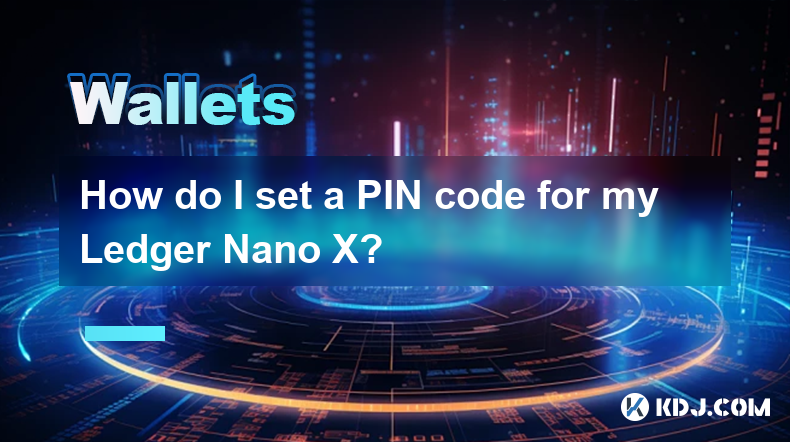
How do I set a PIN code for my Ledger Nano X?
Apr 08,2025 at 11:14pm
Setting a PIN code for your Ledger Nano X is a crucial step in securing your cryptocurrency assets. The PIN code acts as a primary layer of security, ensuring that only you can access your device. In this article, we will guide you through the process of setting up a PIN code on your Ledger Nano X, ensuring that you follow each step meticulously to main...
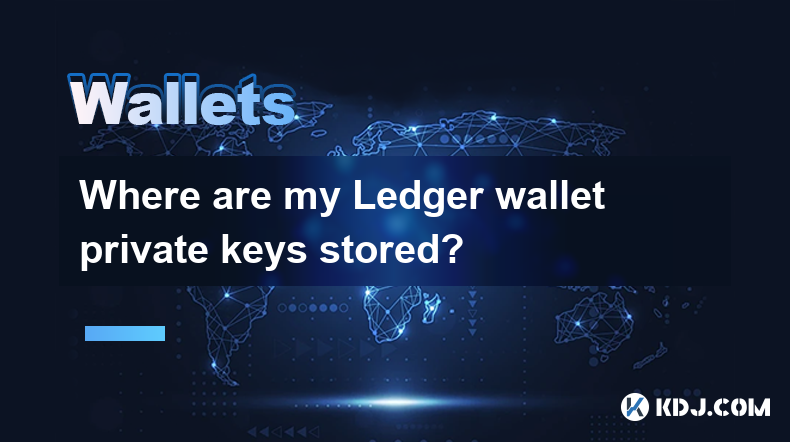
Where are my Ledger wallet private keys stored?
Apr 08,2025 at 10:35pm
When using a Ledger hardware wallet, one of the most critical aspects to understand is the storage and management of your private keys. This article will delve into the specifics of where your Ledger wallet private keys are stored, ensuring you have a comprehensive understanding of their security and accessibility. Understanding Private Keys in Ledger W...
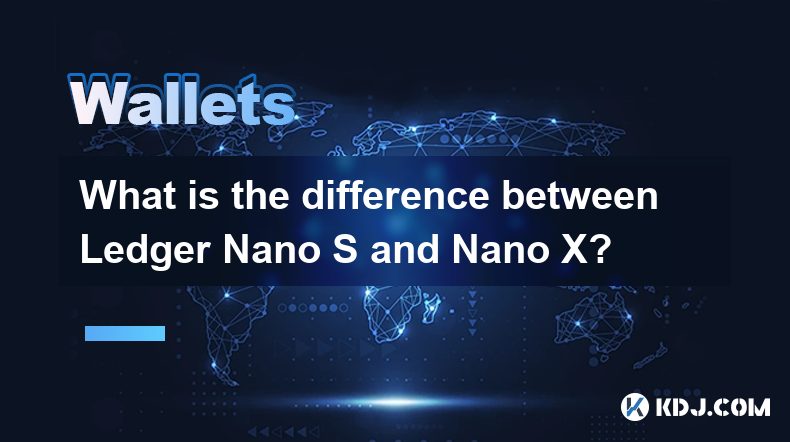
What is the difference between Ledger Nano S and Nano X?
Apr 09,2025 at 12:49am
When it comes to securing your cryptocurrencies, hardware wallets are often recommended as the safest option. Among the most popular hardware wallets are the Ledger Nano S and Ledger Nano X. Both devices are produced by Ledger, a well-known company in the cryptocurrency security industry. This article will delve into the differences between these two de...

How do I enable the Shield Transaction feature on Trezor?
Apr 08,2025 at 10:28pm
Enabling the Shield Transaction feature on Trezor involves a series of steps that allow you to enhance the privacy of your cryptocurrency transactions. This feature is particularly useful for users who want to protect their transaction history from being easily traced on the blockchain. In this article, we will guide you through the process of enabling ...

Does the Ledger wallet support offline signing?
Apr 09,2025 at 04:49am
Introduction to Ledger Wallet and Offline SigningThe Ledger wallet is a popular hardware wallet used by cryptocurrency enthusiasts to securely store their digital assets. One of the key features that users often inquire about is offline signing. Offline signing, also known as cold signing, is a security measure that allows users to sign transactions wit...

How do I send Ethereum to my Ledger wallet?
Apr 09,2025 at 03:21am
Sending Ethereum to your Ledger wallet involves a few straightforward steps, but it's crucial to follow them carefully to ensure the security of your funds. In this guide, we'll walk you through the process of transferring Ethereum to your Ledger wallet, ensuring that you understand each step and the necessary precautions. Preparing Your Ledger WalletBe...

How do I set a PIN code for my Ledger Nano X?
Apr 08,2025 at 11:14pm
Setting a PIN code for your Ledger Nano X is a crucial step in securing your cryptocurrency assets. The PIN code acts as a primary layer of security, ensuring that only you can access your device. In this article, we will guide you through the process of setting up a PIN code on your Ledger Nano X, ensuring that you follow each step meticulously to main...

Where are my Ledger wallet private keys stored?
Apr 08,2025 at 10:35pm
When using a Ledger hardware wallet, one of the most critical aspects to understand is the storage and management of your private keys. This article will delve into the specifics of where your Ledger wallet private keys are stored, ensuring you have a comprehensive understanding of their security and accessibility. Understanding Private Keys in Ledger W...

What is the difference between Ledger Nano S and Nano X?
Apr 09,2025 at 12:49am
When it comes to securing your cryptocurrencies, hardware wallets are often recommended as the safest option. Among the most popular hardware wallets are the Ledger Nano S and Ledger Nano X. Both devices are produced by Ledger, a well-known company in the cryptocurrency security industry. This article will delve into the differences between these two de...

How do I enable the Shield Transaction feature on Trezor?
Apr 08,2025 at 10:28pm
Enabling the Shield Transaction feature on Trezor involves a series of steps that allow you to enhance the privacy of your cryptocurrency transactions. This feature is particularly useful for users who want to protect their transaction history from being easily traced on the blockchain. In this article, we will guide you through the process of enabling ...
See all articles






















































































